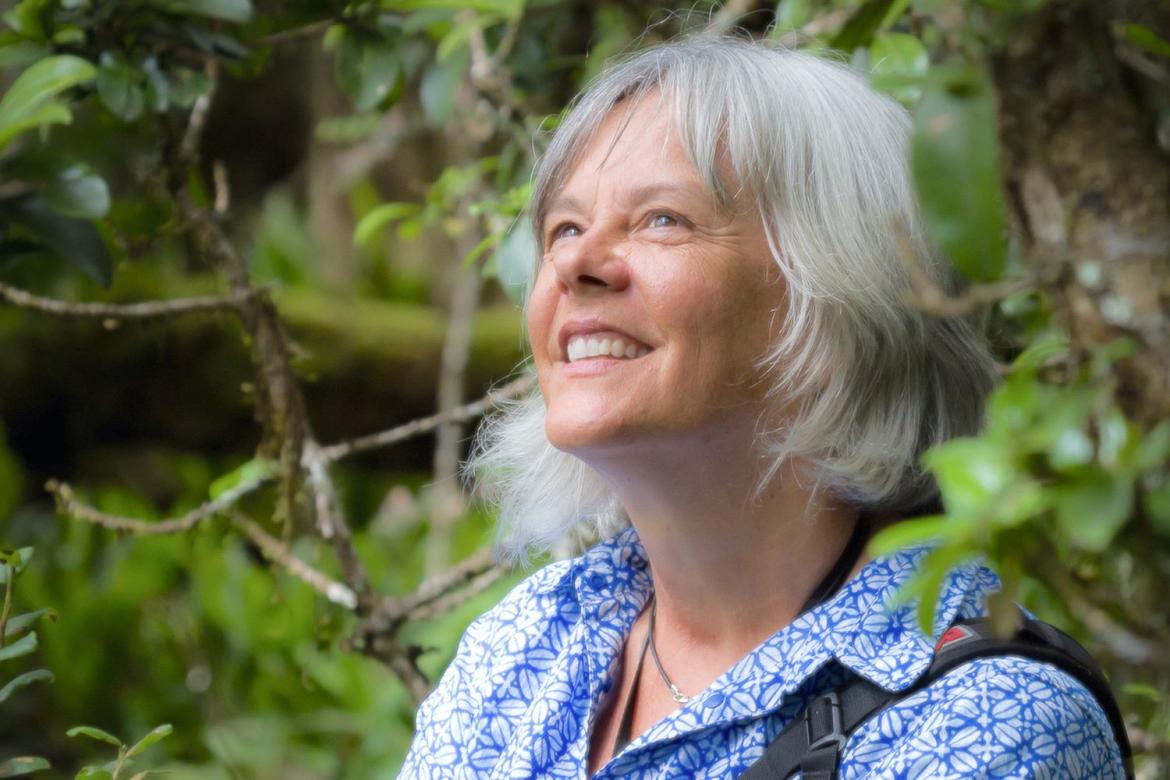
Kim Steutermann Rogers. Credit: Bryan Berkowitz
Mar 17, 2021
The pull of a special place is something most of us know intimately. Whether it's the comfort of a quiet corner in our backyard or an otherworldly destination far from home, there is nothing that satisfies the soul like forging a deep connection to nature. Kim Steutermann Rogers and her husband were so enchanted by the tropical scenery, world-class beaches, and abundant plant and animal life of Hawaii when they honeymooned on Kauai, they bought into a time-share condo and continued returning to Hawaii on vacation. "Finally, right after our 11th wedding anniversary, we moved here—for one year," she says. "That was 21 years ago. We're still here."
Beyond the obvious attractions, Kim says the thing that makes Hawaii stand out is its biodiversity of flora and fauna and the endemic species found nowhere else in the world. "They hold the culture and stories of the place. Without the native plants and animals, Hawaii would be just another tropical destination with sand and palm trees." The scientific concept of adaptive radiation, she explains, has gone wild in this remote island ecosystem, as evidenced by the speciation of Hawaii's famous honeycreepers, in which a single species of finch evolved into more than 50 different honeycreepers as they adapted to their new environment in Hawaii.
At the same time, this biodiversity is under a daily assault from invasive species that make their way to the islands in air and ship cargo. "In some places, entire valleys are being overtaken by a single introduced tree species, choking out natives and eliminating any understory or ground cover. When this happens, after heavy rains, mud and debris flow down the rivers and streams to the ocean, smothering the reef and creating a chocolate milk–like ring around the island."
"They hold the culture and stories of the place. Without the native plants and animals, Hawaii would be just another tropical destination with sand and palm trees."
Kim's exhaustive knowledge of these conservation challenges stems, in part, from her work for Kauai Invasive Species Committee, a partnership between government, private, and nonprofit organizations and concerned individuals working to preserve Kauai's native biodiversity and minimize the adverse ecological, economic, and social impacts of invasive species. Kim's area of expertise is raising awareness about Hawaii's most abundant native trees—ohia—and a threat called Rapid Ohia Death that is killing them. She is also a freelance journalist covering the science and nature of Hawaii's native and endangered flora and fauna. In a recent story for Audubon magazine, for instance, she wrote about the ups and downs in the hopeful recovery of Hawaii's 'alalā, also known as the Hawaiian crow. In addition to her professional work, she volunteers for a couple national wildlife refuges and a national marine sanctuary on the island.
Sierra Club Outings leader Jill McIntire met Kim years ago during a volunteer project on Midway Atoll, which is home to 75 percent of the world's population of Laysan albatross. She has since become an invaluable resource for Sierra Club trips, helping leaders plan camping arrangements and service projects and delivering conservation presentations on a wide range of topics, including Rapid Ohia Death, the impact of marine debris on Hawaiian monk seals and Laysan albatross, and more. "Over the years, I've met with various Sierra Club trip participants who are all so eager to learn more about Hawaii and to help." Kim encourages them to give back to the Hawaiian Islands by participating in hands-on conservation projects and will often provide them with biosanitation kits to stop the spread of invasive species as they travel from one part of the island to the other.
"To live in Hawaii, in my opinion, comes with a responsibility to take care of the place," Kim says, echoing not only the modern environmental movement but also the native people who inhabited these lands long before us and still do. Ultimately, honoring our special place boils down to the following: "Be respectful. Give back. Ask permission first. Leave this world in a better state than you found it—basically, all the things my mother taught me!"
Learn more about Kim and read her writing at kimsrogers.com.
